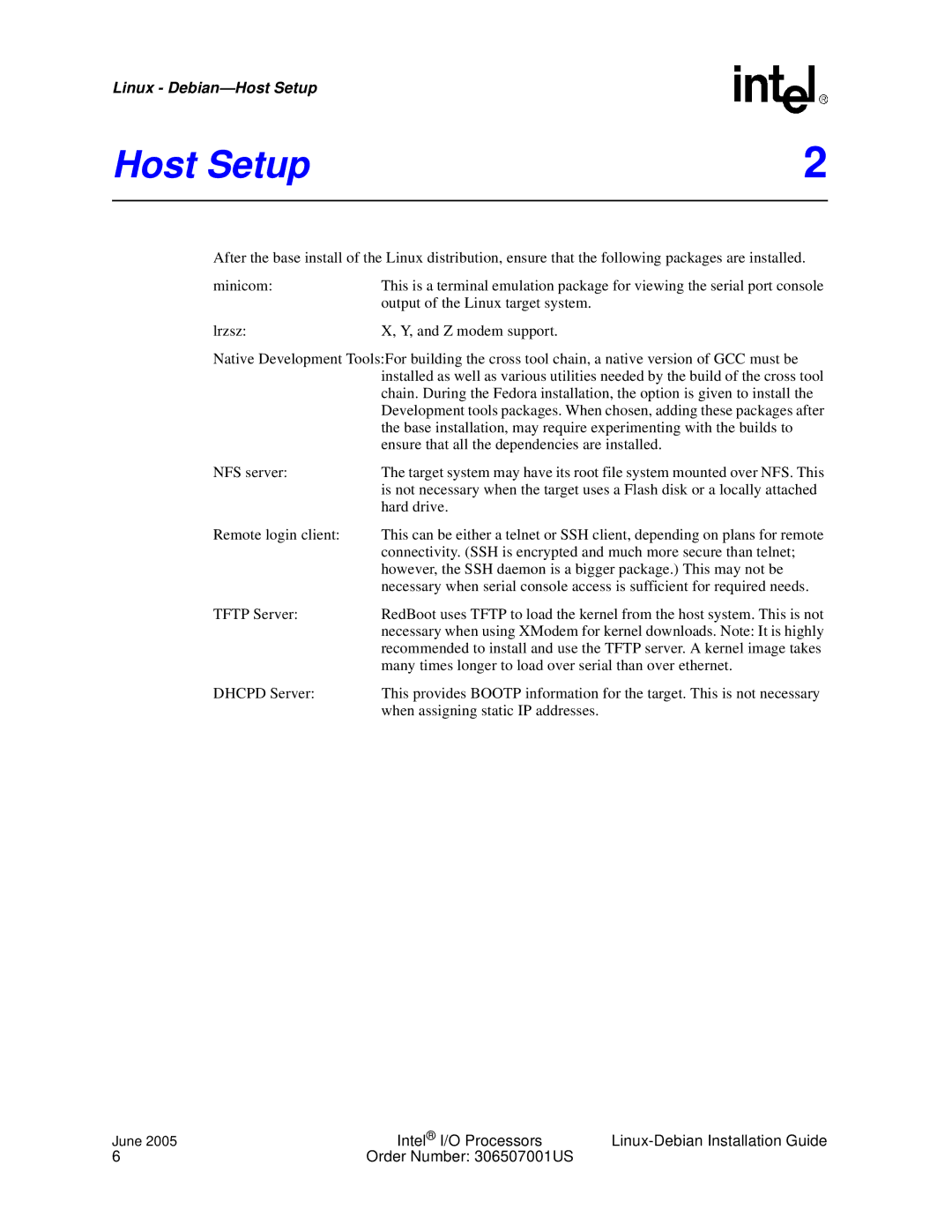Linux -
Host Setup | 2 |
|
|
After the base install of the Linux distribution, ensure that the following packages are installed.
minicom: | This is a terminal emulation package for viewing the serial port console |
| output of the Linux target system. |
lrzsz: | X, Y, and Z modem support. |
Native Development Tools:For building the cross tool chain, a native version of GCC must be installed as well as various utilities needed by the build of the cross tool chain. During the Fedora installation, the option is given to install the Development tools packages. When chosen, adding these packages after the base installation, may require experimenting with the builds to ensure that all the dependencies are installed.
NFS server: | The target system may have its root file system mounted over NFS. This |
| is not necessary when the target uses a Flash disk or a locally attached |
| hard drive. |
Remote login client: | This can be either a telnet or SSH client, depending on plans for remote |
| connectivity. (SSH is encrypted and much more secure than telnet; |
| however, the SSH daemon is a bigger package.) This may not be |
| necessary when serial console access is sufficient for required needs. |
TFTP Server: | RedBoot uses TFTP to load the kernel from the host system. This is not |
| necessary when using XModem for kernel downloads. Note: It is highly |
| recommended to install and use the TFTP server. A kernel image takes |
| many times longer to load over serial than over ethernet. |
DHCPD Server: | This provides BOOTP information for the target. This is not necessary |
| when assigning static IP addresses. |
June 2005 | Intel® I/O Processors | |
6 | Order Number: 306507001US |
|
